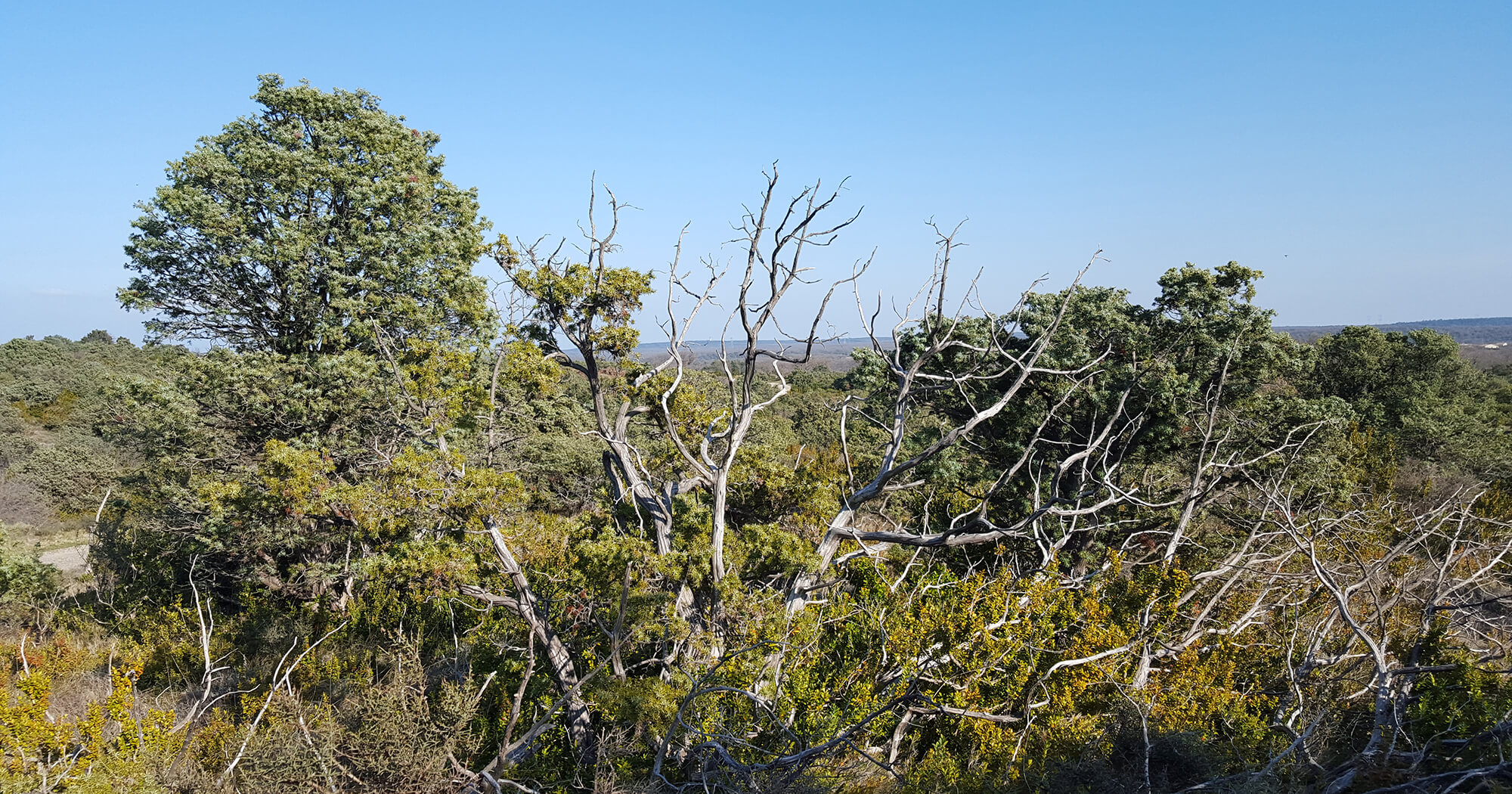Garrigues and maquis are shrub and bush formations typical of the Mediterranean environment. The mere mention of them is synonymous with warmth, holidays, aromatic smells and the song of the cicadas! This habitat, proportionally little represented at the national level, shelters a specialised fauna and flora, often endemic to the south of France. You may be lucky enough to
see some species that you won’t find elsewhere.
Five species of these areas
Woodchat shrike (Lanius senator)
There are three species of shrike in France, all of which are threatened. It is the woodchat shrike that you are most likely to see in the southern Ardèche. It is easily recognised by its red cap and nape, contrasting with its black headband, forehead and back. The shrike can be found in agricultural landscapes with hedgerows, scrubs and isolated trees. It arrives in our regions from April onwards and spends the summer there to breed.
Did you know? If you spot locusts or grasshoppers impaled on bramble thorns, keep your eyes peeled! What you’re looking at is the larder of a shrike. That means it’s probably close by.
Western three-toed skink
Grass snake? Viper? Nothing of the sort, the western three-toed skink is a lizard that has adopted a snake-like appearance! If you are lucky enough to see it, you will notice that it still has legs at the front and back of its body. In fact, like the slow worm or hazelworm, the western three-toed skink has not finished evolving and still has vestiges of the shape of its ancestors. It is mainly found around the Mediterranean and in grasslands with a fairly dense herbaceous layer. This species is under French national protection.
Aesculapian snake
This snake can measure up to 2 m and is relatively discreet. It can be identified by its beige to dark brown bronze colouring and yellow belly. Like all non venomous snakes, it has a round pupil. This arboreal species prefers densely vegetated environments (scrubs, hedges, forest edges, open woodland, etc.). It can also be found in dry grasslands, wasteland or scree slopes. It feeds on birds, small mammals and lizards. This species is protected in France.
Did you know? Of the 37 reptile species in France, 86% are found in the Mediterranean region!
Blood dogwood
The blood dogwood is a shrub known for the dark red colour of its foliage and young twigs at the end of summer. It dominates hedges and bushy vegetation on sunny limestone soils. In spring, its flowers attract many pollinators. In autumn, the black berries are eaten by birds.
Humans also know how to exploit the properties of these berries: their juice was once used to dye leather blue-grey. The oil extracted from the dogwoods was also used to make soap and as fuel for lighting.
Spiked magician or Bush Cricket
The spiked magician is the largest orthopteran (grasshoppers, crickets and alike) in continental France. There are no known males in France! This species uses what is known as “parthenogenesis” to reproduce: the female lays unfertilised eggs that give rise to new genetically identical individuals. This “cloning” process enables the population to survive without a male.
The absence of genetic mixing makes the species more vulnerable to external factors such as climate change or the arrival of a pathogen that could decimate the entire population. It is the only orthopteran to have national protection status. This nocturnal species is found in the garrigues and thermophilic environments of southern France.
